Purvis Young hoodwinked by former manager
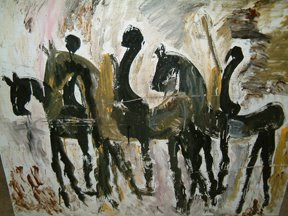
(all photos courtesy of Rare Visions and Roadside Revelations, taken at Gallery 721 in Fort Lauderdale)
(excerpted from the Biscayne Times...please read the full article by clicking the headline below:)
Artistic Genius Meets Artful Dodger
For painter Purvis Young, the encounter was devastating
By Tiffany Rainey BT Staff Writer
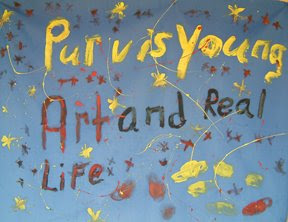
Long-time friend Leon Rolle, with whom Young currently lives, is a steady force in his life. Rolle and his wife oversee everything from Young’s medical appointments (necessary to monitor the 65-year-old artist’s transplanted kidney) to arranging his business meetings. McKinney and Yokel, also trusted friends, may not be a continuous presence, but lately they’ve been close at hand. One reason is their concern for Young’s fragile health following last year’s transplant. Another is their effort to help Young reorganize and rebuild his art enterprise. And yet another is the persistent threat of scam artists, people like former manager Martin Siskind, insinuating themselves into Young’s life.
Siskind is not a welcome face among the artist’s allies, and hasn’t been since Young filed a lawsuit against him last year. That suit was settled just a few weeks ago and resulted in Siskind claiming about 20 percent of the prolific Young’s unsold artwork, some 200 individual paintings. Little wonder that mere mention of the man’s name evokes a palpable hostility. Rolle notes with some wariness that, not an hour earlier, he had spotted Siskind driving by the studio.
“Any time I’m around him,” observes Young, shaking his head in disgust, “he still comes up to me like we’re friendly. We argued all the time. We just didn’t get along.”
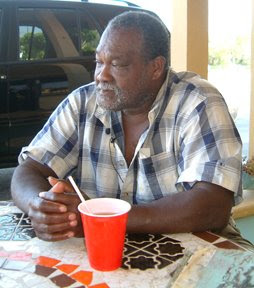
Young’s involvement with Siskind began in 2005, when the two met thanks to neighboring warehouse spaces. Those close to the artist say Siskind became a fixture when he noticed the attention Young was getting from a film crew making a documentary of his life. Before long, they entered into a verbal business agreement that would split profits 50-50 on any artwork Siskind helped the painter sell. Siskind also promised to set up a bank trust to help Young manage his income. Problems arose when Siskind did not supply requested accounting records of the partnership’s assets.
On February 8, 2007, Young filed a petition for an injunction in civil court, demanding that an accounting be made. It alleged that Siskind obstructed the sale of certain paintings, denied Young access to the 54th Street warehouses where his work was stored, failed to record the money received from artwork sales, and refused to disburse any of the profits owed to him. Siskind strictly controlled Young’s money, and gave him a meager allowance ($500 per week) for living expenses.
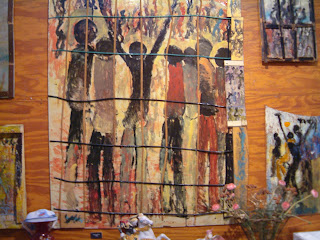
Less than a week later both Siskind and Forman filed detailed affidavits with the court asserting that they had not been given adequate time to pull together the records Young wanted. They also suggested the artist was withholding money that rightfully belonged to the partnership. Then Siskind did something that changed everything: He sought to have Young declared incompetent.
In Florida, any adult can file a petition in probate court arguing that another individual is incompetent, cannot properly care for himself, and should become, in effect, a ward of the state. After such a petition has been filed, and after a judge deems it to be legitimate, a committee of two health professionals and one lay person conducts an investigation into whether the person is in fact incapacitated. Part of that investigation involves psychological testing.
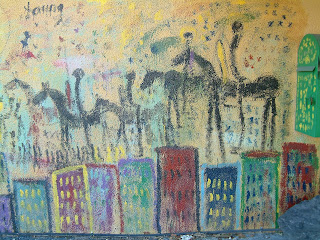
Young, who was recovering from his kidney transplant surgery at the time, had no choice but to submit to the tests. The results were startling.
For years, many people understood Young to be an eccentric, but also a self-taught artistic genius. His compulsion to paint gritty scenes of urban life, as well as heavenly visions, compelled him to use any materials he could find — ordinary house paint, scraps of wood as canvases. He filled entire blocks of Overtown with his distinctive murals, and created literally thousands of individual works. Eventually his singular talent attracted the attention of the established art world, and his paintings began to sell. Was he a meticulous money manager? No. But neither are many driven artists. Still he survived and, in his own way, prospered.
By the time Siskind alleged that he was incapacitated, Young had earned a worldwide reputation in a genre sometimes called “outsider art.” But when the legal system took a measure of him, none of that mattered. The probate judge declared him to be incompetent and stripped him of his right to conduct his life as he saw fit. Two guardians were appointed to manage his affairs — one for personal matters, another for his property. And with that, Siskind effectively neutralized Young’s lawsuit against him.
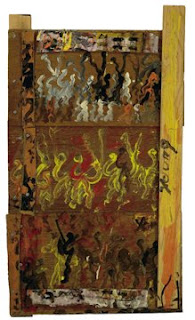
McKinney says the probate court was unaware of the lawsuit Young had filed against Siskind, and by the time the judge was notified, the guardianship process had gone too far for reconsideration. And so David Mangiero, a respected Miami attorney and guardianship expert, was appointed to be Young’s property guardian. He inherited the artist’s lawsuit. But rather than take the case to court, Mangiero, acting in what he believed to be Young’s best interest, began negotiations to settle the case. This did not sit well with Young. “The guardians listened to [Siskind] more than they listened to me,” he asserts. “It’s like [Mangiero] wasn’t even concerned about me. All he talked about was [Siskind].”
Adds Leon Rolle: “When the guardians got involved, the whole thing shifted to settlement. It just looked and felt funny. It was just a question of how much art was going to be lost.”
Mangiero, who did not respond to messages seeking comment, came to terms with Siskind. The settlement, approved by a judge this past December, required Young to hand over approximately 200 of his pieces to Siskind in a painstaking process meant to give each party an equal chance to walk away with the paintings he wanted. Approximately 1000 pieces were at stake. For the first 100, Young got eight for every two Siskind could lay claim to. The remaining 900 were divided this way: Siskind could claim 10 for every 40 chosen by Young.
Many questions linger in the minds of Young and his friends. What happened to proceeds from all the paintings supposedly sold over the 14 months Siskind was involved with Young? If no sales took place and there are no revenues, as Siskind claims, what happened to the several pieces Young says were missing from the collection that was divided in the settlement? “Martin has sworn that he doesn’t have any artwork, but we know he does,” McKinney says.